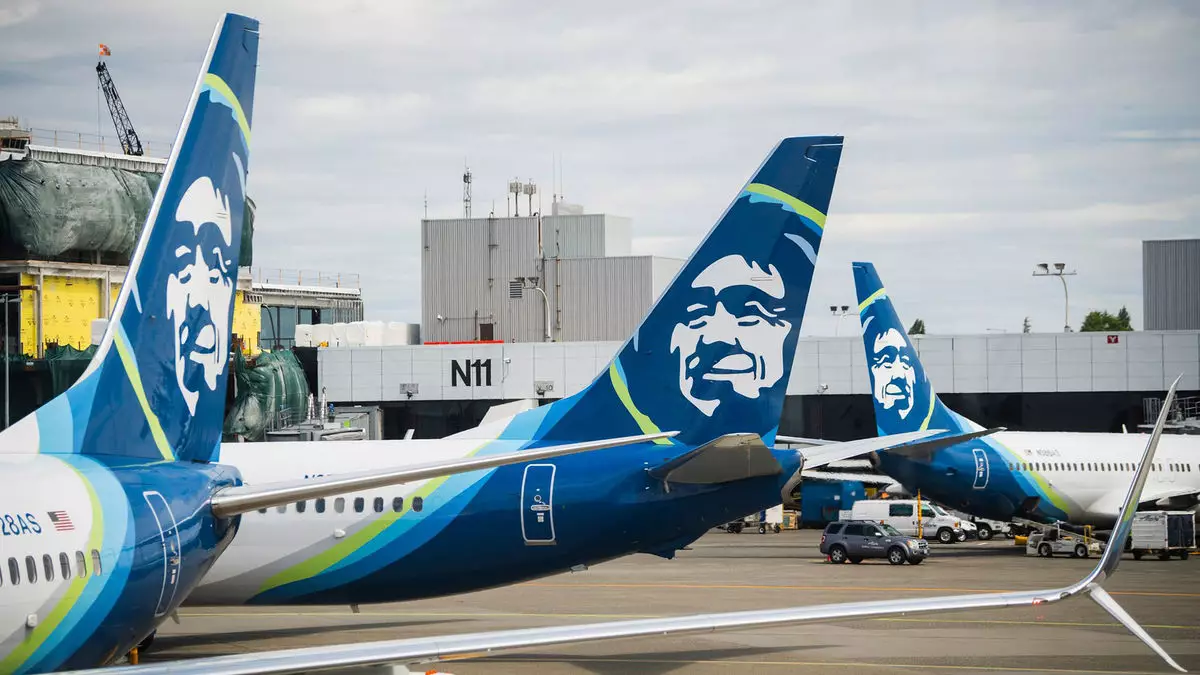On a recent Sunday night, Alaska Airlines encountered significant operational setbacks at the Seattle-Tacoma International Airport, one of its primary bases. The airline temporarily grounded flights due to ongoing disruptions caused by an unidentified technology issue. Reports indicated that these problems were rectified by around 10 p.m. local time, but not before the situation caused frustration among countless travelers. Update messages sent from the airline via their social media accounts indicated an acknowledgment of the inconvenience, urging passengers to verify their flight statuses prior to heading to the airport.
It’s crucial to note that the airline’s communication was proactive but lacked clarity regarding the nature of the technological failures. Rather than offering detailed explanations, Alaska Airlines opted for a broad apology, which underlines a prevalent issue in customer service during technological crises: the fine balance between transparency and maintaining operational integrity.
This incident marked a continuation of challenging weeks for air travelers at Seattle-Tacoma. Just a week prior, the Port of Seattle, responsible for airport operations, disclosed that they had been targeted by cybercriminals who demanded a staggering ransom of $6 million in bitcoin. The ramifications of a cyberattack on critical infrastructure like an airport can be profound, potentially destabilizing operations and undermining public trust.
The timing of both the cyber incident and Alaska Airlines’ technological issues created a compounded effect. As airlines and airport officials work to restore normalcy, the prospect of future attacks looms large, particularly in an era when cyber threats continue to evolve. Passengers are left to navigate uncertainty while potentially facing compounded fears about their travel safety.
The convergence of a technology failure and recent cybersecurity revelations raises concerns regarding passenger confidence in Alaska Airlines and air travel more broadly. Frequent travelers often rely on real-time updates and responsive customer service, both of which may falter under the pressure of technological mishaps. In an industry where customer loyalty is hard-won, disruptions can jeopardize reputations and lead to long-term repercussions.
As air travel becomes increasingly complex and heavily reliant on technology, the emphasis on robust cybersecurity measures is more critical than ever. Alaska Airlines’ recent communication responses, while well-intentioned, reveal a need for improved crisis management protocols that not only address operational issues but also build trust and confidence among passengers. Transparency in revealing the nature of technological disruptions can be instrumental in reassuring customers and ameliorating the impact of such incidents.
As Alaska Airlines and the Port of Seattle navigate these challenges, the importance of a proactive approach to both technology management and cybersecurity cannot be overstated. Beyond immediate operational recovery, the focus must turn to implementing systemic improvements that fortify resilience against future threats. For aviation stakeholders, these incidents should serve as a wake-up call, emphasizing the necessity for collaboration between technology providers, cybersecurity experts, and airline operators to safeguard the future of air travel.
In the end, while Alaska Airlines strives to resolve current issues, it must also prioritize establishing a foundation of trust with passengers to ensure safe, reliable travel experiences moving forward.

